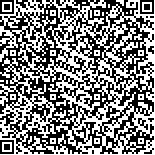| 胡巾帼,朱轶天,沈一杰,等.胃癌双硫死亡相关长链非编码RNA预后模型建立与应用[J].肿瘤学杂志,2025,31(4):346-356. |
| 胃癌双硫死亡相关长链非编码RNA预后模型建立与应用 |
| Construction and Validation of A Prediction Model for Prognosis of Gastric Cancer Based on Disulfidptosis-Related Long Non-Coding RNA |
| 投稿时间:2024-08-20 |
| DOI:10.11735/j.issn.1671-170X.2025.04.B010 |
|
 |
| 中文关键词: 双硫死亡 长链非编码RNA 胃肿瘤 预后模型 药物敏感性 |
| 英文关键词:disulfidptosis long non-coding RNA gastric neoplasms prognostic model drug sensitivity |
| 基金项目: |
|
| 摘要点击次数: 128 |
| 全文下载次数: 52 |
| 中文摘要: |
| 摘 要:[目的] 基于癌症基因组图谱(The Cancer Genome Atlas,TCGA)数据库,分析胃癌患者的基因表达矩阵,构建双硫死亡相关长链非编码RNA(long non-coding RNA,lncRNA)(disulfidptosis-related lncRNA,DRL)的预后模型。[方法] 胃癌患者的转录组数据和临床信息均来自TCGA数据库。从文献中获得双硫死亡相关基因,并进行Pearson相关分析以鉴定DRL。对DRL进行机器学习算法,单因素Cox和Lasso分析得到与预后特征相关的DRL,多因素Cox分析确定具有独立预后价值的DRL,并构建风险模型,根据模型风险评分的中位数将胃癌样本分为高、低风险组。通过实时荧光定量聚合酶链反应(quantitative real-time polymerase chain reaction,qRT-PCR)验证DRL预后基因在正常胃黏膜上皮细胞系(GSE-1)和胃癌细胞系(AZ521、MKN45和MGC-803)之间的差异表达。并进一步进行临床亚组、肿瘤突变负荷(tumor mutation burden,TMB)检测、药物敏感性分析、免疫浸润和通路富集分析。[结果] Lasso回归分析、单因素Cox分析和多因素Cox分析获得6个与胃癌临床结局相关的DRL(IGFL2-AS1、AC129507.1、PINK1-AS、TNFRSF10A-AS1、AC000123.1和FLNB-AS1),并证实均是胃癌的独立预后因素。基于上述6个DRL构建胃癌的预后模型,并验证了模型的可靠性。生存分析显示高风险组患者的总生存期明显短于低风险组患者(P<0.001)。免疫浸润和药物敏感性分析显示不同风险组之间免疫浸润细胞和敏感性药物存在显著性差异(P<0.05)。qRT-PCR结果提示AC129507.1和TNFRSF10A-AS1在3种胃癌细胞系中的表达水平均显著高于GSE-1细胞系(P<0.05)。[结论] 基于DRL的预后模型对于胃癌的预后预测和精确治疗有一定作用。 |
| 英文摘要: |
| Abstract: [Objective] Based on The Cancer Genome Atlas (TCGA) database,to construct and validate a prediction model for prognosis of gastric cancer(GC) based on disulfidptosis-related lncRNA(DRL). [Methods] The transcriptomic data and clinical information of GC patients were obtained from the TCGA database. Disulfidptosis-related genes were screened from the literature, and Pearson correlation analysis and machine learning algorithm were applied to identify DRL. The DRL associated with prognosis of GC were identified with univariate Cox regression and Lasso analysis, and the DRL with independent prognostic value were determined with multivariate Cox analysis, based on which a nomogram risk model for prognosis was constructed. Based on the median risk score of the model, GC patients were divided into high and low-risk groups. The expression of DRL prognostic genes was detected in normal gastric epithelial mucosal cell line GSE-1 and GC cell lines AZ521, MKN45, and MGC-803 using qRT-PCR. The prognostic significance of the nomogram risk model was further examined on clinical subgroups, through the tumor mutation burden (TMB) detection, drug sensitivity, immune infiltration and pathway enrichment studies. [Results] Lasso regression analysis, univariate Cox analysis, and multivariate Cox analysis showed that six DRL (IGFL2-AS1, AC129507.1, PINK1-AS, TNFRSF10A-AS1, AC000123.1, and FLNB-AS1) were confirmed as independent prognostic factors for GC. A prognostic nomogram model based on these six DRL was constructed and its reliability verified. Survival analysis indicated that patients in the high risk group had significantly shorter overall survival than those in the low risk group(P<0.001). Immune infiltration and drug sensitivity analyses revealed significant differences between risk groups (P<0.05). Additionally, qRT-PCR results indicated that the expression levels of AC129507.1 and TNFRSF10A-AS1 were significantly higher in the three GC cell lines compared to the GSE-1 cell line (P<0.05). [Conclusion] The prognostic model based on DRL may be used for prognostic prediction for gastric cancer. |
|
在线阅读
查看全文 查看/发表评论 下载PDF阅读器 |